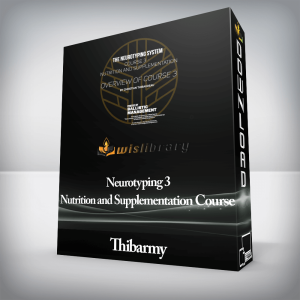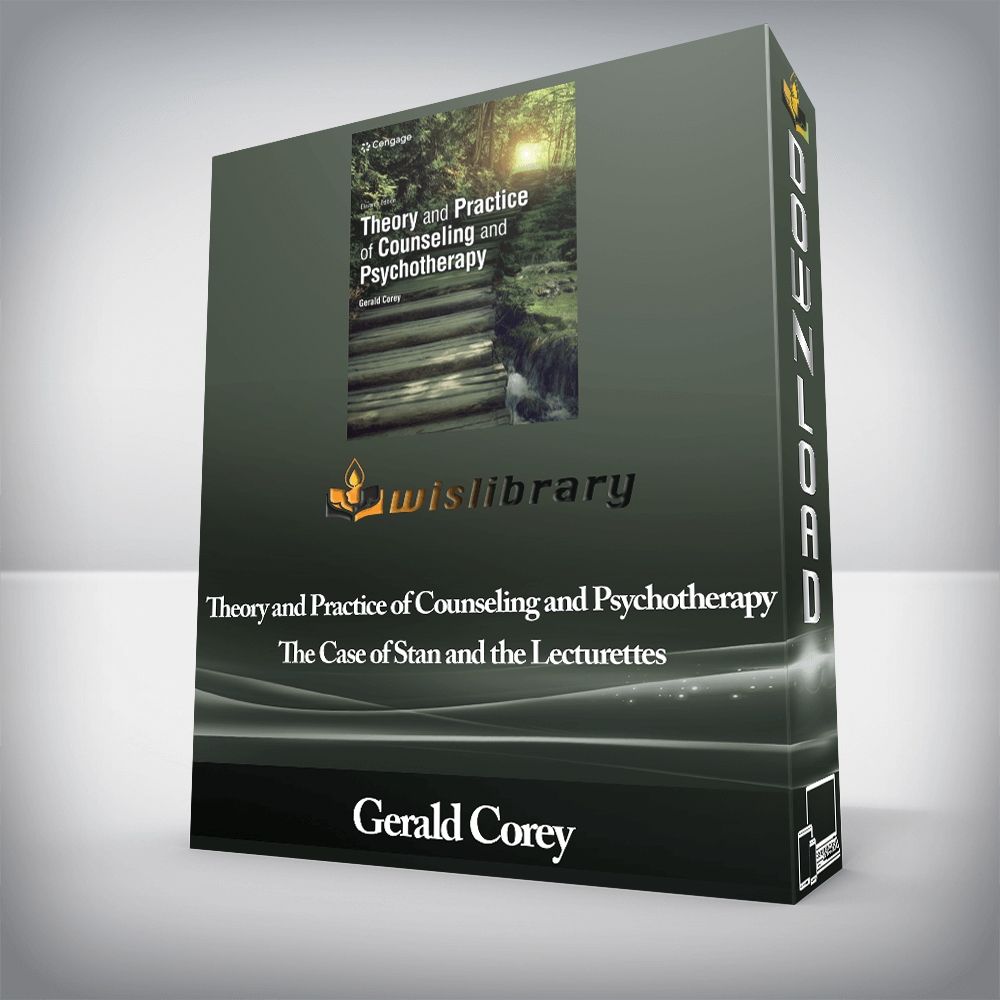Gerald Corey – Theory and Practice of Counseling and Psychotherapy – The Case of Stan and the LecturettesIncorporating the thinking, feeling and behaving dimensions of human experience, the Eleventh Edition of Corey’s best-selling text helps readers compare and contrast the therapeutic models expressed in counseling theories.Table of ContentsCOVER PAGETITLE PAGECOPYRIGHT PAGEDEDICATIONABOUT THE AUTHORPREFACE TO ELEVENTH EDITIONACKNOWLEDGMENTSPART 1. BASIC ISSUES IN COUNSELING PRACTICEChapter 1. Introduction and OverviewWhere I StandSuggestions for Using the BookOverview of the Theory ChaptersIntroduction to the Case of StanIntake Interview with StanOverview of Some Key Themes in Stan’s LifeBackground on the Case of GwenIntake SessionVideo on Counseling Sessions with GwenOverview of Video MindTap Program for The Case of GwenChapter 1 Intake SessionChapter 2 Multicultural PerspectivesChapter 3 Informed Consent SessionChapter 4 Psychoanalytic (Psychodynamic) TherapyChapter 5 Adlerian TherapyChapter 6 Existential TherapyChapter 7 Person-Centered TherapyChapter 8 Gestalt TherapyChapter 9 Behavior TherapyChapter 10 Cognitive Behavior TherapyChapter 11 Choice Theory/Reality TherapyChapter 12 Feminist Therapy/Social JusticeChapter 13 Postmodern Approaches: Solution-Focused Brief TherapyChapter 14 Family Systems TherapyChapter 15 Integrative ApproachesChapter 2. The Counselor: Person and ProfessionalThe Counselor as a Therapeutic PersonPersonal Characteristics of Effective CounselorsPersonal Therapy for the CounselorThe Counselor’s Values and the Therapeutic ProcessThe Role of Values in CounselingCan Counselors Who Self-Identify as Religious Provide Value-Free Counseling to LGBTQ+ Clients?Addressing Religious and Spiritual Values in CounselingThe Role of Values in Developing Therapeutic GoalsBecoming an Effective Multicultural CounselorAcquiring Competencies in Multicultural CounselingIncorporating Culture in Counseling PracticeIssues Faced by Beginning TherapistsDealing With AnxietyBeing Yourself and Self-DisclosureAvoiding PerfectionismBeing Honest About Your LimitationsUnderstanding SilenceDealing with Demands From ClientsDealing with Clients Who Lack CommitmentTolerating AmbiguityBecoming Aware of Your CountertransferenceDeveloping a Sense of HumorSharing Responsibility with the ClientDeclining to Give AdviceDefining Your Role as a CounselorMaintaining Your Vitality as a Person and as a ProfessionalSummarySelf-Reflection and Discussion QuestionsRecommended Supplementary Readings for Chapter 2ReferencesChapter 3. Ethical Issues in Counseling PracticePutting Clients’ Needs Before Your OwnEthical Decision MakingThe Role of Ethics Codes as a Catalyst for Improving PracticeSome Steps in Making Ethical DecisionsThe Right of Informed ConsentDimensions of ConfidentialityEthical Concerns with the Use of TechnologyExceptions to Confidentiality and Privileged CommunicationEthical Issues From a Multicultural PerspectiveAre Current Theories Adequate in Working With Culturally Diverse Populations?Is Counseling Culture-Bound?Focusing on Both Individual and Environmental FactorsEthical Issues in the Assessment ProcessThe Role of Assessment and Diagnosis in CounselingEthical Aspects of Evidence-Based PracticeManaging Multiple Relationships in Counseling PracticePerspectives on Multiple RelationshipsBecoming an Ethical CounselorSummarySelf-Reflection and Discussion QuestionsWhere to Go From HereRecommended Supplementary Readings for Chapter 3ReferencesPART 2. THEORIES AND TECHNIQUES OF COUNSELINGChapter 4. Psychoanalytic TherapyKey ConceptsView of Human NatureStructure of PersonalityConsciousness and the UnconsciousAnxietyEgo-Defense MechanismsDevelopment of PersonalityThe Therapeutic ProcessTherapeutic GoalsTherapist’s Function and RoleClient’s Experience in TherapyRelationship Between Therapist and ClientApplication: Therapeutic Techniques and ProceduresMaintaining the Analytic FrameworkFree AssociationInterpretationDream AnalysisAnalysis and Interpretation of ResistanceAnalysis and Interpretation of TransferenceApplication to Group CounselingApplying the Psychoanalytic Approach to School CounselingJung’s Perspective on the Development of PersonalityContemporary Trends: Object-Relations Theory, Self Psychology, and Relational PsychoanalysisSummary of Stages of DevelopmentSome Directions of Contemporary Psychodynamic TherapyAn Expert’s Perspective on Psychoanalytic TherapyDiscussion Questions Related to Dr. Blau’s Psychoanalytic PerspectivePsychoanalytic Therapy From a Multicultural PerspectiveStrengths From a Diversity PerspectiveShortcomings From a Diversity PerspectiveSummary and EvaluationSummaryContributions of the Classical Psychoanalytic ApproachContributions of Contemporary Psychoanalytic ApproachesLimitations and Criticisms of Psychoanalytic ApproachesSelf-Reflection and Discussion QuestionsWhere to Go From HereRecommended Supplementary Readings for Chapter 4ReferencesChapter 5. Adlerian TherapyKey ConceptsView of Human NatureGoal-Directed MovementGoal-Orientation and the Unity of the PersonalityCommunity Feeling and Social InterestPrivate LogicLife TasksInfluences on Individual DevelopmentBirth Order and Sibling RelationshipsCulture, Race, and Ethnicity: Systemic HolismThe Therapeutic ProcessTherapeutic GoalsTherapist’s Function and RoleClient’s Experience in TherapyRelationship Between Therapist and ClientApplication: Therapeutic Techniques and ProceduresPhase 1: Establishing the RelationshipPhase 2: Assessing the Individual’s Psychological DynamicsPhase 4: Adaptive Reorientation and ReeducationApplication for Individual PsychologyApplication for Family CounselingApplication for Group CounselingApplying the Adlerian Approach to School CounselingAn Expert’s Perspective on Adlerian TherapyDiscussion Questions Related to Dr. Bitter’s Adlerian PerspectiveAdlerian Therapy From a Multicultural PerspectiveStrengths From a Diversity PerspectiveShortcomings From a Diversity PerspectiveSummary and EvaluationSummaryContributions of the Adlerian ApproachLimitations and Criticisms of the Adlerian ApproachSelf-Reflection and Discussion QuestionsWhere to Go From HereRecommended Supplementary Readings for Chapter 5ReferencesChapter 6. Existential TherapyIntroductionHistorical Background in Philosophy and ExistentialismKey Figures in Contemporary Existential PsychotherapyKey ConceptsView of Human NatureProposition 1: The Capacity for Self-AwarenessProposition 2: Freedom and ResponsibilityProposition 3: Striving for Identity and Relationship to OthersProposition 4: The Search for MeaningProposition 5: Anxiety as a Condition of LivingProposition 6: Awareness of Death and NonbeingThe Therapeutic ProcessTherapeutic GoalsTherapist’s Function and RoleClient’s Experience in TherapyRelationship Between Therapist and ClientApplication: Therapeutic Techniques and ProceduresPhases of Existential CounselingClients Appropriate for Existential CounselingApplication to Brief TherapyApplication to Group CounselingApplications of Existential Approach to School CounselingAn Expert’s Perspective on Existential TherapyDiscussion Questions Related to Dr. Deurzen’s Existential PerspectiveExistential Therapy From a Multicultural PerspectiveStrengths From a Diversity PerspectiveShortcomings From a Diversity PerspectiveSummary and EvaluationSummaryContributions of the Existential ApproachLimitations and Criticisms of the Existential ApproachSelf-Reflection and Discussion QuestionsWhere to Go From HereRecommended Supplementary Readings for Chapter 6ReferencesChapter 7. Person-Centered TherapyIntroductionFour Periods of Development of the ApproachEmotion-Focused TherapyExistentialism and HumanismAbraham Maslow’s Contributions to Humanistic PsychologyKey ConceptsView of Human NatureThe Therapeutic ProcessTherapeutic GoalsTherapist’s Function and RoleClient’s Experience in TherapyRelationship Between Therapist and ClientApplication: Therapeutic Techniques and ProceduresEarly Emphasis on Reflection of FeelingsEvolution of Person-Centered MethodsThe Role of AssessmentApplication of the Philosophy of the Person-Centered ApproachApplication to Crisis InterventionApplication to Group CounselingApplication of the Person-Centered Approach with Children and Adolescents in School CounselingPerson-Centered Expressive Arts TherapyPrinciples of Expressive Arts TherapyCreativity and Offering Stimulating ExperiencesAn Expert’s Perspective on Person-Centered Expressive ArtsDiscussion Questions Related to the Person-Centered Expressive Arts PerspectivePerson-Centered Therapy From a Multicultural PerspectiveStrengths From a Diversity PerspectiveShortcomings From a Diversity PerspectiveSummary and EvaluationSummaryContributions of the Person-Centered ApproachLimitations and Criticisms of the Person-Centered ApproachSelf-Reflection and Discussion QuestionsWhere to Go From HereRecommended Supplementary Readings for Chapter 7ReferencesChapter 8. Gestalt TherapyIntroductionKey ConceptsView of Human NatureSome Principles of Gestalt Therapy TheoryContact and Resistances to ContactThe NowUnfinished BusinessEnergy and Blocks to EnergyThe Therapeutic ProcessTherapeutic GoalsTherapist’s Function and RoleClient’s Experience in TherapyRelationship Between Therapist and ClientApplication: Therapeutic Techniques and ProceduresThe Experiment in Gestalt TherapyPreparing Clients for Gestalt ExperimentsThe Role of ConfrontationGestalt Therapy InterventionsApplication to Group CounselingApplication of the Gestalt Approach to School CounselingAn Expert’s Perspective on Gestalt TherapyDiscussion Questions Related to the Gestalt Therapy PerspectiveGestalt Therapy From a Multicultural PerspectiveStrengths From a Diversity PerspectiveShortcomings From a Diversity PerspectiveSummary and EvaluationSummaryContributions of Gestalt TherapyLimitations and Criticisms of Gestalt TherapySelf-Reflection and Discussion QuestionsWhere to Go From HereRecommended Supplementary Readings for Chapter 8ReferencesChapter 9. Behavior Therapy : Coauthored by Caroline Bailey and Sherry CormierIntroductionHistorical BackgroundFour Areas of DevelopmentKey ConceptsCurrent Trend in Behavior TherapyBasic Characteristics and AssumptionsThe Therapeutic ProcessTherapeutic GoalsTherapist’s Function and RoleClient’s Experience in TherapyRelationship Between Therapist and ClientApplication: Therapeutic Techniques and ProceduresApplied Behavioral Analysis: Operant Conditioning TechniquesProgressive Muscle RelaxationSystematic DesensitizationIn Vivo Exposure and FloodingEye Movement Desensitization and ReprocessingSocial Skills TrainingSelf-Management Programs and Self-Directed BehaviorMultimodal Therapy: Clinical Behavior TherapyMindfulness and Acceptance-Based ApproachesApplication to Group CounselingApplying the Behavioral Approach to School CounselingAn Expert’s Perspective on Behavior TherapyDiscussion Questions Related to the Behavior Therapy PerspectiveBehavior Therapy From a Multicultural PerspectiveStrengths From a Diversity PerspectiveShortcomings From a Diversity PerspectiveSummary and EvaluationSummaryContributions of Behavior TherapyLimitations and Criticisms of Behavior TherapySelf-Reflection and Discussion QuestionsWhere to Go From HereRecommended Supplementary Readings for Chapter 9ReferencesChapter 10. Cognitive Behavior TherapyIntroductionAlbert Ellis’s Rational Emotive Behavior TherapyIntroductionKey ConceptsView of Emotional DisturbanceABC FrameworkThe Therapeutic ProcessTherapeutic GoalsTherapist’s Function and RoleClient’s Experience in TherapyRelationship Between Therapist and ClientApplication: Therapeutic Techniques and ProceduresThe Practice of Rational Emotive Behavior TherapyApplications of REBT as a Brief TherapyApplication of REBT to Group CounselingApplication of REBT to School CounselingAn Expert’s Perspective on Rational Emotive Behavior TherapyDiscussion Questions Related to the REBT PerspectiveAaron Beck’s Cognitive TherapyIntroductionA Generic Cognitive ModelBasic Principles of Cognitive TherapyThe Client–Therapist RelationshipApplications of Cognitive TherapyApplying Cognitive-Behavioral Counseling with Adolescents in SchoolsChristine Padesky and Kathleen Mooney’s Strengths-Based Cognitive Behavior TherapyIntroductionBasic Principles of Strengths-Based CBTThe Client–Therapist RelationshipApplications of Strengths-Based CBTAn Expert’s Perspective on Cognitive Behavior TherapyDiscussion Questions Related to Dr. Christine Padesky’s Cognitive Behavior PerspectiveDonald Meichenbaum’s Cognitive Behavior ModificationIntroductionHow Behavior ChangesStress Inoculation TrainingA Cognitive Narrative Approach to Cognitive Behavior TherapyCognitive Behavior Therapy From a Multicultural PerspectiveStrengths From a Diversity PerspectiveShortcomings From a Diversity PerspectiveSummary and EvaluationSummaryContributions of the Cognitive-Behavioral ApproachesLimitations and Criticisms of the Cognitive-Behavioral ApproachesSelf-Reflection and Discussion QuestionsWhere to Go From HereRecommended Supplementary Readings for Chapter 10ReferencesChapter 11. Choice Theory/Reality TherapyIntroductionKey ConceptsView of Human NatureChoice Theory Explanation of BehaviorCharacteristics of Reality TherapyThe Therapeutic ProcessTherapeutic GoalsTherapist’s Function and RoleClient’s Experience in TherapyRelationship Between Therapist and ClientApplication: Therapeutic Techniques and ProceduresThe Practice of Reality TherapyThe Counseling EnvironmentProcedures That Lead to ChangeThe “WDEP†SystemApplication to Group CounselingApplication of Reality Therapy to School CounselingAn Expert’s Perspective on Choice Theory/Reality TherapyDiscussion Questions Related to the Choice Theory/Reality Therapy PerspectiveChoice Theory/Reality Therapy From a Multicultural PerspectiveStrengths From a Diversity PerspectiveShortcomings From a Diversity PerspectiveSummary and EvaluationSummaryContributions of Choice Theory/Reality TherapyLimitations and Criticisms of Choice Theory/Reality TherapySelf-Reflection and Discussion QuestionsWhere to Go From HereRecommended Supplementary Readings for Chapter 11ReferencesChapter 12. Feminist TherapyIntroductionHistory and Developmentkey ConceptsConstructs of Feminist TheoryFeminist Perspective on Personality DevelopmentRecent Trends in Feminist TherapyPrinciples of Feminist TherapyThe Therapeutic ProcessTherapeutic GoalsTherapist’s Function and RoleClient’s Experience in TherapyRelationship Between Therapist and ClientApplication: Therapeutic Techniques and ProceduresThe Role of Assessment and DiagnosisTechniques and StrategiesThe Role of Men in Feminist TherapyApplication of the Feminist Approach to Group WorkFeminist Social Justice Principles Applied to School CounselingAn Expert’s Perspective on Feminist TherapyDiscussion Questions Related to the Feminist Therapy PerspectiveFeminist Therapy from a Multicultural and Social Justice PerspectiveStrengths From a Diversity PerspectiveShortcomings From a Diversity PerspectiveSummary and EvaluationSummaryContributions of Feminist Therapy and Multicultural and Social Justice PerspectivesLimitations and Criticisms of Feminist CounselingSelf-Reflection and Discussion QuestionsWhere to Go From HereRecommended Supplementary Readings for Chapter 12ReferencesChapter 13. Postmodern ApproachesIntroduction to Social ConstructionismHistorical Glimpse of Social ConstructionismThe Collaborative Language Systems ApproachSolution-Focused Brief TherapyIntroductionKey ConceptsThe Therapeutic ProcessApplying SFBT to Group CounselingApplication of Solution-Focused Counseling to School CounselingAn Expert’s Perspective on Solution-Focused Brief TherapyDiscussion Questions Related to the Solution-Focused Brief Therapy PerspectiveMotivational InterviewingThe MI SpiritCommon Ground with Person-Centered TherapyThe Basic Principles of Motivational InterviewingThe Stages of ChangeCommon Ground with Solution-Focused Brief TherapyApplication of Motivational Interviewing to School CounselingNarrative TherapyIntroductionKey ConceptsThe Therapeutic ProcessApplication: Therapeutic Techniques and ProceduresApplication of Narrative Therapy to Group CounselingAn Expert’s Perspective on Narrative TherapyDiscussion Questions Related to the Narrative Therapy PerspectivePostmodern Approaches From a Multicultural PerspectiveStrengths From a Diversity PerspectiveShortcomings From a Diversity PerspectiveSummary and EvaluationSummaryContributions of Postmodern ApproachesLimitation and Criticisms of Postmodern ApproachesSelf-Reflection and Discussion QuestionsWhere to Go From HereRecommended Supplementary Readings for Chapter 13ReferencesChapter 14. Family Systems Therapy: Coauthored by James Robert Bitter and Gerald CoreyIntroductionThe Family Systems PerspectiveDifferences Between Systemic and Individual ApproachesDevelopment of Family Systems TherapyStructural-Strategic Family TherapyRecent Innovations in Family TherapyA Multilayered Process of Family TherapyForming a RelationshipConducting an AssessmentHypothesizing and Sharing MeaningFacilitating ChangeApplication of Family Systems Approaches to School CounselingAn Expert’s Perspective on Family Systems TherapyDiscussion Questions Related to the Family Systems Therapy PerspectiveFamily Systems Therapy From a Multicultural PerspectiveStrengths From a Diversity PerspectiveShortcomings From a Diversity PerspectiveSummary and EvaluationSummaryContributions of Family Systems ApproachesLimitations and Criticisms of Family Systems ApproachesSelf-Reflection and Discussion QuestionsWhere to Go From HereRecommended Supplementary Readings for Chapter 14ReferencesPART 3. INTEGRATION AND APPLICATIONChapter 15. An Integrative PerspectiveThe Movement Toward Psychotherapy IntegrationPathways Toward Psychotherapy IntegrationAdvantages of Psychotherapy IntegrationThe Challenge of Developing an Integrative PerspectiveIntegration of Multicultural Issues in CounselingIntegration of Spirituality and Religion in CounselingThe Therapeutic ProcessTherapeutic GoalsTherapist’s Function and RoleClient’s Experience in TherapyRelationship Between Therapist and ClientThe Place of Techniques and Evaluation in CounselingDrawing on Techniques From Various ApproachesEvaluating the Effectiveness of Counseling and TherapyFeedback-Informed TreatmentSummaryConcluding CommentsSelf-Reflection and Discussion QuestionsWhere to Go From HereRecommended Supplementary Readings for Chapter 15References16. CASE ILLUSTRATION: AN INTEGRATIVE APPROACH IN WORKING WITH STANCounseling Stan: Integration of TherapiesA Place to BeginClarifying the Therapeutic RelationshipClarifying the Goals of TherapyWorking with Stan’s Past, Present, and FutureIdentifying FeelingsExpressing and Exploring FeelingsThe Thinking Dimension in TherapyDoing: Another Essential Component of TherapyWorking Toward Revised DecisionsEncouraging Stan to Work with His Family of OriginThe Spiritual DimensionWorking with Stan’s Drinking ProblemMoving Toward Termination of TherapyEncouraging Stan to Join a Therapy GroupCommentary on the Thinking, Feeling, and Doing Perspective17. TRANSACTIONAL ANALYSISIntroductionHistorical BackgroundKey ConceptsView of Human NatureThe Ego StatesThe Need for StrokesInjunctions and CounterinjunctionsDecisions and RedecisionsGamesBasic Psychological Life Positions and LifescriptsThe Therapeutic ProcessTherapeutic GoalsTherapist’s Function and RoleClient’s Experience in TherapyRelationship between Therapist and ClientApplication: Therapeutic Techniques and ProceduresTherapeutic ProceduresApplication to GroupsApplying Transactional Analysis in School CounselingTransactional Analysis from a Multicultural PerspectiveContributions to Multicultural CounselingLimitations for Multicultural CounselingSummary and EvaluationSummaryContributions of Transactional AnalysisLimitations and Criticisms of Transactional AnalysisExperiential Exercises and Activities for Transactional AnalysisWhere to Go from HereRecommended Supplementary ReadingsReferences and Suggested ReadingsA Case Illustration: A Transactional Analyst’s Perspective on Ruth by John M. Dusay, M.D.There are no reviews yet.Add a Review Cancel replyYou must be logged in to post a review.
 Duane Ludwig – Leg kicks for Muay Thai
₹5,644.00
Duane Ludwig – Leg kicks for Muay Thai
₹5,644.00
 Thibarmy – Neurotyping 3 – Nutrition and Supplementation Course
₹5,644.00
Thibarmy – Neurotyping 3 – Nutrition and Supplementation Course
₹5,644.00
Gerald Corey – Theory and Practice of Counseling and Psychotherapy – The Case of Stan and the Lecturettes
₹5,644.00






